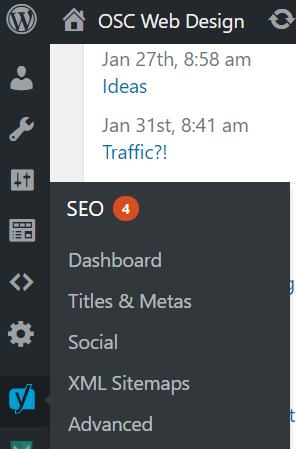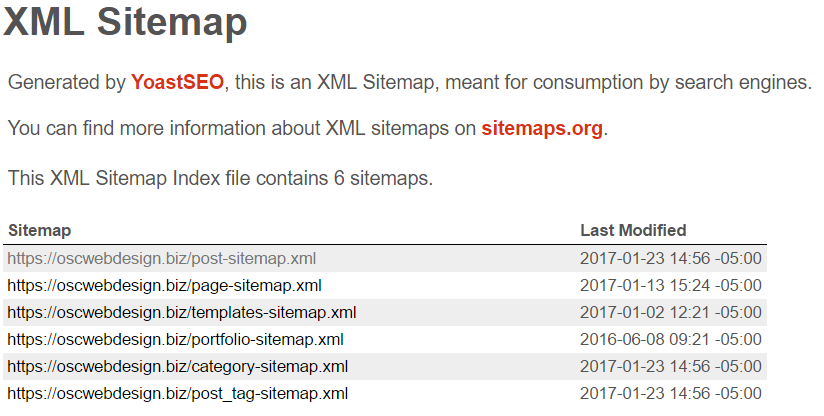It’s easy to feel like a little fish in a big pond – or an ocean – when it comes to the web. Google has over 1 billion websites to index, not to mention each of the pages within each site. So how in the world can you get Google to index a website faster?
By understanding what indexing is, how it works, and following steps recommended by Google itself!
What does website indexing mean?
Search engines, like Google, are the libraries of the web. Their goal is to keep tabs on as much information as possible so that they can deliver it when relevant.
In order to collect the information on each page, Google sends out what they call search engine “spiders”. No, these aren’t the kind of spiders you vengefully go after with a vacuum cleaner.
Search engine spiders are the software Google uses to “crawl” each site. The more often they visit your website, the more frequently your rank will be updated.
Here’s one of our favorite explanations of how search works, as told by a former Google employee Matt Cutts:
How long does it take for Google to index a website?
As with many things involving Google’s search algorithm, it varies. We’ve seen it take anywhere from a couple of days to as long as a month for new websites to get indexed.
How Spiders Crawl
To crawl your website content, spiders use links and sitemaps. You’ve probably heard of links before, but what exactly are sitemaps?
Simply, a sitemap is a list of pages within your website. It helps spiders crawl your information properly.
The crawling process looks like this:
- Google starts with websites with a high PageRank (pages that receive many, reputable links). Think sites like USA.gov and CNN.com.
- They crawl these websites often and the rest of the web less frequently. The links spiders find on pages are added to their to-do list to crawl in the future.
- The information that’s been found during the crawling process is indexed. Keywords are examined at this point to help Google determine where your website belongs and what it is related to.
Get Google to Index a Website Faster
If a month is too long for you (which it should be) there are a few steps you can take to speed up the process.
Create a Sitemap
Like we’ve mentioned, a sitemap is a list of every page under your domain. This is one of the first steps you should take and is encouraged by the Google lords themselves.
Step 1: Install and activate the Yoast SEO plugin.
This plugin is completely free and has a long list of benefits for search engine optimization. One of the very minor ones is that it will create a sitemap for your website.
Step 2: Login to your website’s backend.
For WordPress websites, you can get here typically with this URL: yourwebsite.com/wp-admin.
In the left navigation panel, near the bottom you’ll find the Yoast SEO plugin icon. Hover over it and select ‘XML Sitemaps’.
Be sure to check the box that reads ‘Check this box to enable XML sitemap functionality.’ After saving this setting, you’ll see a straightforward link that says ‘You can find your XML Sitemap here:..’. Click that, and voila! There’s your website’s sitemap.
As you can see our main file only contains 6 links, but that’s because we broke our list into multiple sitemaps.
Submit The Sitemap to Google
Google makes submitting your sitemap quite simple. Visit Google Webmaster Tools to verify ownership of your website.
When you login to Google Webmaster tools, in the navigation on the left click ‘Crawl’ > ‘Sitemaps’. Click the bright orange button that reads ‘Add/Text Sitemap’ and enter your sitemap’s url!
Work on Increasing PageRank
Creating and submitting sitemaps are important steps, but they aren’t much help unless you’re launching a new website.
Google prioritizes it’s crawling according to PageRank. Consequently, the most effective way to get Google to index a website faster is by boosting it’s PageRank.
A few ways you can do this:
- First and foremost, concentrate on procuring credible backlinks.
- Use internal links within your content.
- Work on your local SEO and prove you’re located where you claim to be.
- Make sure your web design is responsive on all devices.
- Never get involved with black-hat SEO schemes..
Submit URLs
Google has another handy resource in their Webmaster Tools. It’s unclear if this really is effective or simply somewhere for Google to direct disgruntled webmasters, but it’s worth a shot. Simply enter your URL here in the search console.
If you strategically invest in content creation and search engine optimization, over time you will see results. The online ocean may never shrink, but you can certainly move your way up the food chain!




